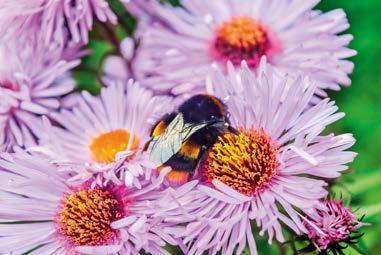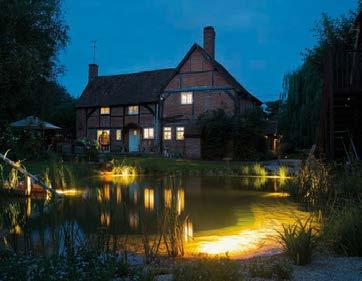
10 minute read
This Month Our regular guide to people
SPRING People to Meet
Introducing the gardeners and public figures we most admire in British horticulture
Marcus Chilton-Jones
The curator of the Royal Horticultural Society’s new garden at Bridgewater explains his role and the history of the site, which is due to open in May
Some people love taking something that’s run down and making it beautiful again, while others fi nd such projects a terrible fa . Luckily I fall into the former category, and the prospect of transforming a weedy, arsenic-riddled site into an elegant RHS garden was hugely exciting. Here was a chance to paint over the framework with a new composition – a renaissance rather than a restoration.
When I began here in 2017, I knew the role would come with challenges, but I couldn’t have predicted Covid-19 or the discovery of arsenic in the soil of our proposed Kitchen Garden. The solution to the latter involved digging up the soil and reusing it to grow ornamentals elsewhere.
The Victorians used lead arsenate as a pesticide with gay abandon. While we’ve moved on from this odious practice, we do champion the golden age of walled kitchen gardens in other ways. Our contemporary Kitchen Garden has been designed by Charlotte Harris and Hugo Bugg, who based its footprint of pathways on old maps of local waterways and the historic fi eld network in the surrounding countryside. They’ve incorporated local, industrial and agricultural history into the modern garden, which is now entirely organic.
Absolutely critical to Bridgewater’s horticultural re-awakening has been the input from sta , volunteers, local community groups, designers, contractors and partners. Our vision puts social sustainability centre stage. There’s the Wellbeing Garden for delivering outreach work to local healthcare providers, where patients who have been prescribed gardening can get their hands dirty or relax. We’re also planning a Learning Garden and a Community Grow Garden with hexagonal raised beds like a honeycomb – an homage to the Mancunian bee. The jewel in the crown is the Paradise Garden by Tom Stuart-Smith, Bridgewater’s master planner. It contains three planting typologies and around 3,000 plant varieties.
We’ve got lots of planting, weeding and mulching to get on with ahead of our launch day, but we’re thrilled to be opening to the public at last.
See rhs.org.uk/gardens/ bridgewater
RECOMMENDED
Marcus’s favourite gardens
Bodnant Garden
Conwy An awe-inspiring and evocative garden with fabulous planting. I recommend walking among the Champion Trees in The Dell. Tel: 01492 650460; nationaltrust.org.uk
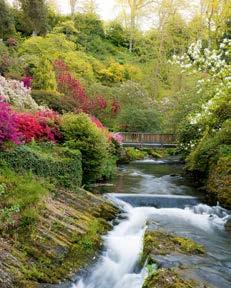
Trebah Garden
Cornwall I like Cornish gardens generally – the warmer climate enables such a rich mix of garden heritage. I particularly love the huge gunnera at Trebah, which make you feel like you’re a small child again walking beneath them. Tel: 01326 252200; trebahgarden.co.uk trebahgarden.co.uk


SPRING Out & About
Unmissable events, news and the very best gardens to visit this month
Tulip Festival at Morton Hall
1–3 May, Worcestershire Morton Hall is set to host its second non-virtual Tulip Festival this May, in partnership with the Royal Shakespeare Company. Visitors can expect intricate tulip planting schemes in formal borders and pots, swathes of naturalised bulbs in meadows and woodland, and beautiful cut-flower displays from the experts at Bloms Bulbs, who will be on hand to advise. Additionally, take inspiration from a selection of original RSC costumes and enjoy a delicious treat in a spacious marquee. Adults £10; under-12s free. Pre-booking essential at rsc.org.uk


Outdoor sculpture show
1 April-16 May, Dorset See some 100 outdoor sculptures and even more gallery pieces at Form – The Sculpture Show, a spring exhibition at Sculpture by the Lakes near Dorchester. The artworks, from 30 leading UK sculptors, will be installed across the sculpture park’s 26 acres of lakes, rivers, garden, woods and gallery space and include pieces by the event’s curator Simon Gudgeon. Tickets cost £12.50 and must be pre-booked at sculpturebythelakes.co.uk
Spring plant fairs
18 April, West Sussex and Kent Both Borde Hill garden in West Sussex and Great Comp garden in Kent plan to host plant fairs on 18 April this year. Visitors to Borde Hill can enjoy a fantastic display of rhododendrons, azaleas, flowering trees, bluebells and tulips while browsing the stalls of leading independent UK nurseries. There will also be plenty of plants to snap up at Great Comp, along with a dazzling show of 52 different magnolia varieties and a mass of bright azaleas and rhododendrons. For more information and to book tickets, visit bordehill.co.uk; greatcompgarden.co.uk
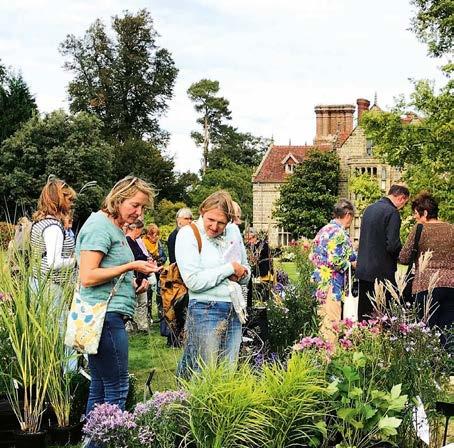

NGS Garden
Maenan Hall, Llanrwst
Conwy This lovely garden on the slopes of the Conwy Valley has dramatic views of Snowdonia. The upper part features sweeping lawns and ornamental ponds, while the bluebell-carpeted dell is filled with magnolias, rhododendrons, camellias, pieris and cherries. Maenan Hall, Maenan, Llanrwst, Conwy LL26 0UL. Sunday 25 April 10:30am-5pm. Adults: £4; children: free. Check the website before visiting. ngs.org.uk
SPRING Things to Do
Keep up to date in the garden with our monthly guide to key gardening tasks from Troy Scott Smith, head gardener at Iford Manor
Cut back CLEMATIS
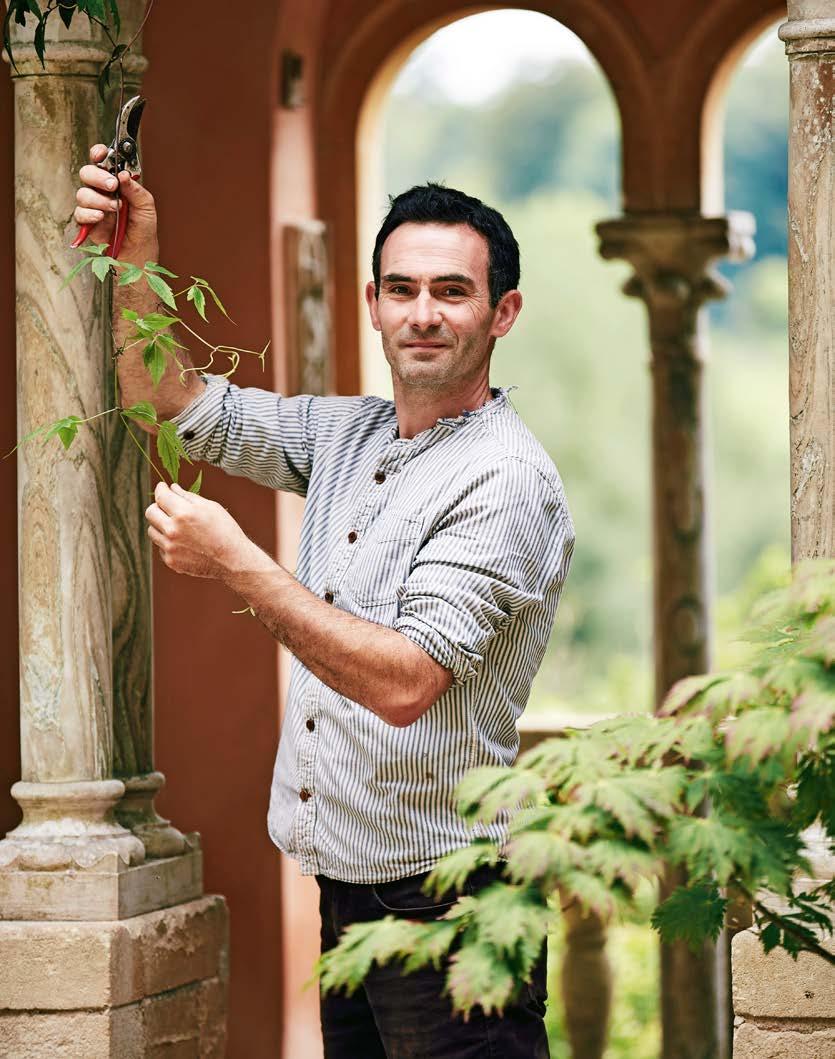
The queen of all climbers is the clematis, and it stands out from the crowd in more ways than one. Clematis take up so little space in a garden, adding quick height to a planting scheme when trained up a support or scrambling through trees and shrubs. They are members of the Ranunculaceae family, the same family that contains buttercups, hellebores, and aquilegia. This gives us a helpful clue to their preference for a moist but well-drained soil. To grow clematis at their best, try to provide a cool root run but with the opportunity for the plants to have their heads baking in the sun.
Although I already grow clematis at Iford, there are many possibilities to add even more, with walls, columns and pillars aplenty for them to climb and scramble up, through and over. Incidentally, the best time to plant clematis is in September when the soil is warm and moist, but now is as good a time as any to make your wish lists.
There are numerous types of clematis, from the early-flowering Alpina and Macropetala types through to the various Montana cultivars that are in flower now. Then there are the large-flowered clematis with flowers the size of dinner plates that bloom in early to mid-summer. Finally, there are the small-flowered hybrids of Clematis viticella that obligingly wait until mid- to late-summer to bloom, filling the floral famine of the ‘summer gap’ and going on to flower well into late autumn.
When it comes to pruning, clematis are divided into three groups based on their time of flowering and the age of the flowering wood (see right). Now is the perfect time to prune those in Group 1 and I shall be pruning our large Clematis montana on the Gatehouse at Iford this week. Iford Manor, Iford, Bradford on Avon, Wiltshire BA15 2BA. Tel: 01225 863146; ifordmanor. co.uk. Follow Troy on Instagram: @troyscottsmith1
Guide to clematis pruning groups
Pruning Group 1
Early-flowering clematis such as Alpina, Montana and Armandii types Lightly prune in mid- to latespring, after flowering, when the risk of frost has passed.
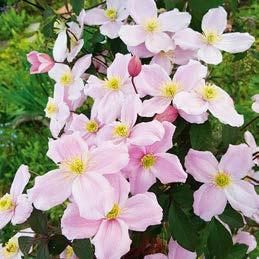
Pruning Group 2
Large-flowered clematis that bloom in early summer such as ‘Nelly Moser’ Prune in February and after the first flush of flowers in early summer.
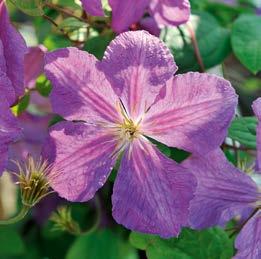
Pruning Group 3
Late-summer-flowering clematis such as Texensis and Viticella types Prune in February. Spring checklist Get plants on track for summer
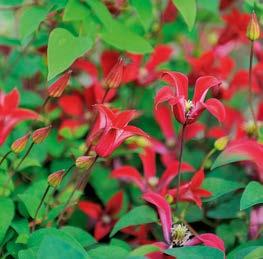
Pinch, prune & cut back
Most perennials that flower before midsummer’s day can be cut back to ground level after blooming. New foliage will quickly return and stay fresh into late summer. Plants such as nepeta, geranium, aquilegia and Iris sibirica all benefit from this approach. The other technique to try now is to pinch out the tips of summer perennials, such as helenium, veronicastrum and phlox. This delays flowering and makes the stems branch. The plants won’t be as tall and may not need staking.
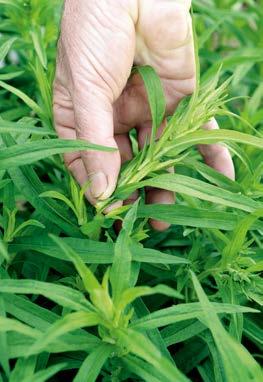

Feed wisteria
Hopefully, we will escape any late frosts, which in just one night can cause the developing blooms of many of our early-flowering plants, including wisteria, to blacken. Wisterias are greedy plants, and their flowering will be improved if you can apply a feed high in potassium and magnesium now. A rose fertiliser would be ideal, applied at 20 grams per square metre around the root zone.
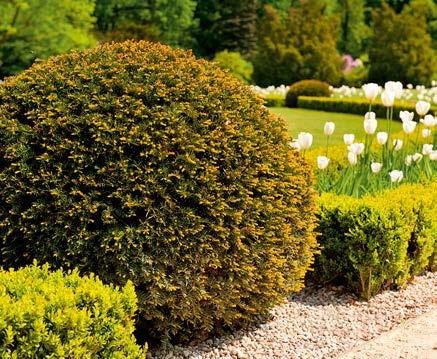
Clip evergreens
Evergreens such as box and yew perform several functions in a garden: creating a division of space; providing visual full stops; used as devices to beckon you on; and for injecting solidity, clarity and mass in perennial plantings. Whatever type of evergreen you are using, or the function it is providing, it will generally require two clips a year – one now in spring and a second in September.
SPRING Nature to Note
The wonder of wildlife in the garden and countryside this month
Run Rabbit RUN!
Stoats can be found throughout Britain, but tend to stick to covered areas for protection. In colder areas they turn completely white in winter, but by summer will all have beautiful chestnut and cream coats.
They lead a mostly solitary existence, coming together only to breed in summer. The female won’t give birth until the following spring, when she produces a litter of six to 12 kits who are born blind and deaf. Mothers stay with their young until the kits become self-su cient at around 12 weeks old.
Stoats can be di cult to spot due to their speed and agility – their distinctive bounding gait distinguishes them from weasels. Keep watch near rabbit warrens, where you might see these voracious hunters seeking out their next meal.
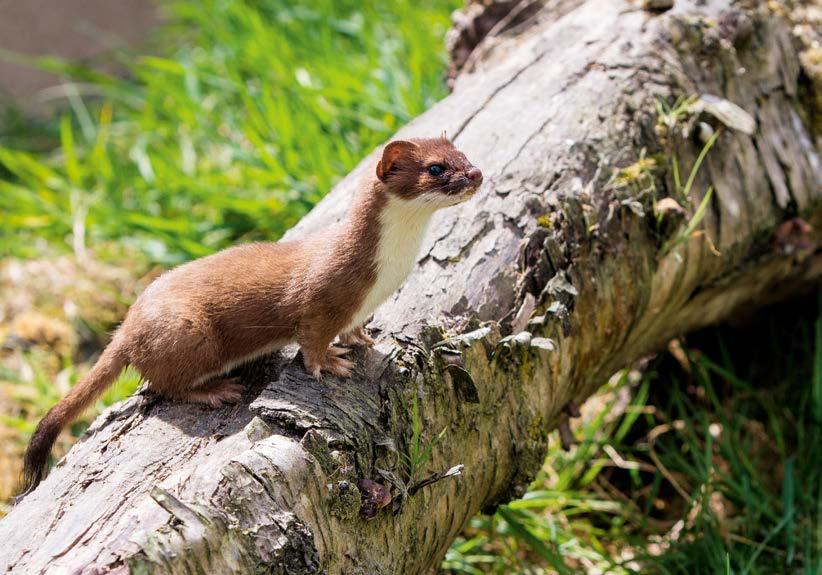
CRAB APPLE (Malus sylvestris)

How to identify it Crab apple trees have an irregular, rounded shape and a wide canopy. Their grey-brown bark is often gnarled or ‘crabbed’, while their pointed, glossy, oval leaves grow to 6cm long and have rounded teeth. Look out for the beautiful, sometimes scented white or pink blossom in spring, which turns into small applelike fruits come summer. Where to find it These trees grow throughout Europe and tend to be found in areas where the soil is heavy and moist, or in scrubland. They are one of the few trees to host parasitic mistletoe (Viscum album). Value to wildlife Crab apple leaves are enjoyed by many moths, including the green pug and the Chinese character, while their fragrant spring fl owers are an important source of pollen and nectar for bees and other pollinating insects. Once the fruit develops, it is enjoyed by many birds and mammals including mice, voles, foxes and badgers. Did you know? Native crab apples are di cult to identify, since many ‘wild’ specimens are descended from the discarded cores of eating apples. They are often planted in commercial orchards because their long fl owering period, makes them a good pollination partner for cultivated apples.
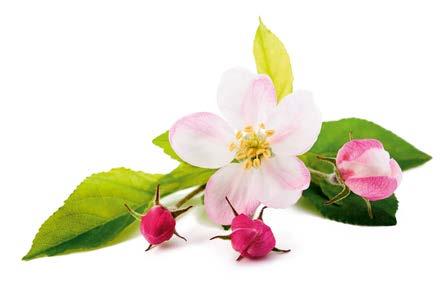
WILDLIFE NEWS
Reprieve for bees
Pesticide toxic to bees will not be used
UK approval for the emergency use of neonicotinoids on sugar beet crops has been withdrawn after recent cold weather killed o virus-transmitting aphids. Campaigners have welcomed the news, since neonicotinoids are known to have a devastating e ect on bee populations. However, they issue a note of caution since use of the previously banned pesticide could still be allowed in the future. pesticide could still be allowed in the future.


